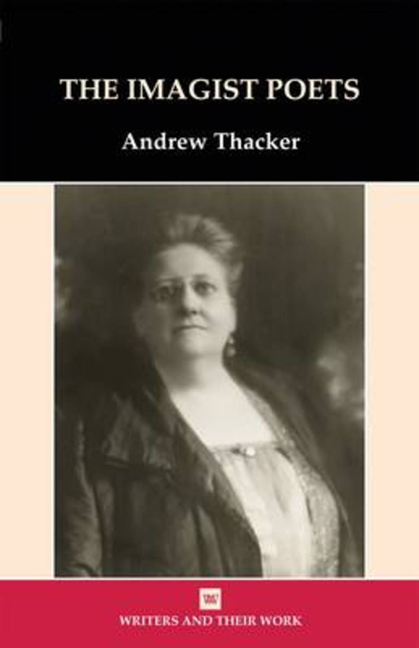Book contents
- Frontmatter
- Dedication
- Contents
- Acknowledgements
- Biographical Outlines
- Abbreviations
- Introduction: The Formation of Imagism
- 1 Movements and Modernism
- 2 Publishing, Publicity, and Magazines
- 3 Prefaces and Manifestos
- 4 Modern Themes
- 5 Urban Images
- 6 Gender and Sexuality: ‘Amygism’ and ‘H.D. Imagiste’
- Afterword
- Notes
- Select Bibliography
- Index
Introduction: The Formation of Imagism
- Frontmatter
- Dedication
- Contents
- Acknowledgements
- Biographical Outlines
- Abbreviations
- Introduction: The Formation of Imagism
- 1 Movements and Modernism
- 2 Publishing, Publicity, and Magazines
- 3 Prefaces and Manifestos
- 4 Modern Themes
- 5 Urban Images
- 6 Gender and Sexuality: ‘Amygism’ and ‘H.D. Imagiste’
- Afterword
- Notes
- Select Bibliography
- Index
Summary
Imagism has often been regarded by literary history as one of the founding moments of modern poetry, as a significant presence within Anglo-American modernism, and as an important influence upon the development of experimental and avant-garde poetry in English throughout the twentieth Century. Looking back from the 1950s T. S. Eliot, for example, wrote that ‘the starting point of modern poetry is the group denominated “imagists” in London about 1910’. Eliot's judge- ment was upheld in one of the first and most influential accounts of modern poetry after the Second World War, C. K. Stead's The New Poetic (1964); their status was then confirmed in the enduring anthology of the poets, Imagist Poetry, edited by Peter Jones and published by Penguin in 1972. This collection is still in print over thirty years later and is probably the first encounter with Imagism for many readers.
But who were the Imagist poets and why is it still worth reading them today, in the twenty-first century? Should they not be considered merely a footnote in literary history, or perhaps a minor chapter in any study of literary modernism in the early years of the twentieth century? This book suggests that it is still of interest to read the Imagist poets, and to evaluate their role within a wider narrative of British and American modernism. Their impact, therefore, deserves something more than cursory notes or summary chapters.
The Imagists consisted of a central core of Richard Aldington, H.D. (Hilda Doolittle), John Gould Fletcher, F. S. Flint, Amy Lowell and Ezra Pound. Other writers published in the anthologies included D. H. Lawrence, James Joyce, William Carlos Williams, and Ford Madox Ford. There were five anthologies of Imagist poetry, in 1914, 1915, 1916, 1917 and a retrospective one in 1930. Imagism helped launch the careers, in particular, of Pound, H.D. and Amy Lowell, and provided a set of statements for the reform of poetic language that influenced many other modernist writers, and later poets.
Conventionally Ezra Pound has been viewed as the central figure behind the theory and practice of Imagist poetry. Pound, critics have suggested, ‘invented’ Imagism in order to further his career, and that of others, in a cultural environment where many other artistic ‘isms’ such as Cubism, Futurism or Impressionism jostled for space and public attention.
- Type
- Chapter
- Information
- The Imagist Poets , pp. 1 - 9Publisher: Liverpool University PressPrint publication year: 2011



